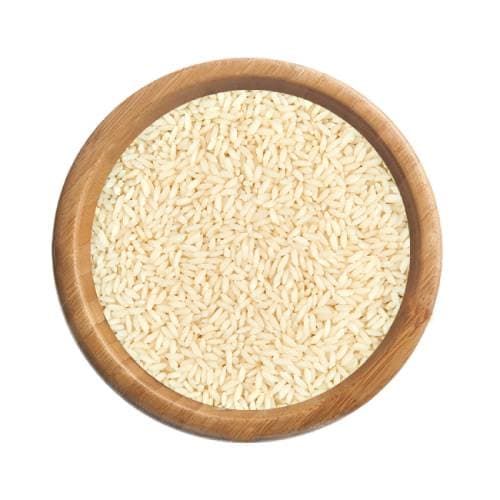
NON BASMATI RICE
Rice is the seed of the grass species Oryza sativa (Asian rice) or less commonly Oryza glaberrima (African rice). rice was first domesticated in the Yangtze River basin in China 13,500 to 8,200 years ago. rice has become a global staple crop important to food security and food cultures around the world. rice is the most important food crop with regard to human nutrition and caloric intake, providing more than one-fifth of the calories consumed worldwide by humans. A World Bank - FAO study claims 8% to 26% of rice is lost in developing nations, on average, every year, because of post-harvest problems and poor infrastructure. The rice accumulates more arsenic than most other food corp where soil or water sources are contaminated with arsenic. Production and consumption of rice is estimated to have been responsible for 4% of global greenhouse gas emissions. Apart from simple steamed rice, a variety of vegetarian and nonvegetarian rice dishes are made. Almost every country and region has it's own distinct rice preperations. For Example Hokkien fried rice (China), Paella (Spain), Champorado (Philippines), Jambalaya (Louisiana, US), Mansaf (Jordan), Tahdig (Iran), Jollof rice (West Africa), Risotto (Italy), Katsudon, sushi(Japan), Bibimbap (Korea), Khao phat (Thailand), Kedgeree (England), Xôi ngũ sắc (Vietnam) etc. Few Indian Rice dishes include Veg/Nonveg Biryani, Dum Biryani, Pulao, Curd Rice, Tomato Rice, Peas Pulao, Lemon Rice, Jeera Rice, Dal Khichdi, Tehri, Schezwan Fried Rice, Kashmiri Pulao, Yakhni Pulao, Mughlai Biryani, Bengali Khichuri, Kidney Beans Pilaf, Coconut Milk Rice, Sambar Rice, Jaggery Rice, Firni, Khir etc. White rice has Glycemic Index 60 which may be a cause of cencern for people suffering from diabetes.
